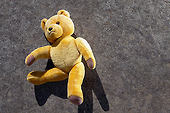Slide 1 of 4: Introduction
Author: Ronald J. Comer, Princeton University
Press the Next button to start this activity

Slide 2 of 4: 41.1 "Child Bipolar Disorder" Versus "Disruptive Mood Dysregulation Disorder"
During the past decade, the number of children diagnosed with child bipolar disorder has increased enormously. Some clinicians think this is an appropriate trend and believe that bipolar disorder is, in fact, underdiagnosed among children. In contrast, others believe that the diagnosis should not be applied to young children, and, in fact, DSM-5 now lists a new diagnosis called “disruptive mood dysregulation disorder,” which, it says, should be applied to children rather than bipolar disorder. This video shows the case of 4-year-old whose severe rages have led to a diagnosis of bipolar disorder. The video also examines the controversy about applying that diagnosis to young children and then treating them with medications that have not been proven to work on children that young.
"Child Bipolar Disorder" vs. "Disruptive Mood Dysregulation Disorder"
Life for Katrina and Bill revolves around their middle child, Kira--
I believe it started when she was an infant.
--who, at the age of four, has rages so violent her own parents are terrified.
But all toddlers have meltdowns.
There's a difference between a meltdown and a rage. We've caught her banging her head on the wall.
Don't!
Twice her parents have her to to the hospital.
On the way to the emergency room, she attacked me while I was driving, and she unbuckled and repeatedly beat me in the head.
Desperate for a diagnosis, Katrina even videotaped her daughter for doctors. And months later, she got one. Bipolar disorder, a permanent psychiatric condition characterized by extreme and self-destructive moodswings.
It's far more common than we had ever thought.
Dr. Janet Wozniak, a pediatric bipolar specialist, says because the periods of rage, like the one this four-year-old girl is having, cycle so much more rapidly in children, the condition is dangerously underdiagnosed. Still, despite the growing evidence that bipolar disorder runs in families and begins in early childhood, diagnosing very young children is still a radical idea. And the powerful psychiatric drugs used to treat adults have virtually no track record in children.
You're treating a very young population right in the middle of a very rapid period of brain development.
Psychiatrist John McClelland says such an extreme diagnosis in a child so young is simply dangerous.
The label itself becomes an explanation. It's not me. It's my bipolar disorder.
What are the risks of medicating a child as young as four?
We don't know anything about the long-term risks for side effects in that age group.
What are the risks of not intervening at this time? What's the devastation to this child's sense of self-esteem-- really to the whole pathway of their life.
Despite Kira's diagnosis, her doctor still refused to medicate her. But her parents fear without treatment, she'll soon hurt herself or someone else.
As it is now, what do you think the future holds for Kira?
If things continue the way that they are, I don't think she'll be with us. I have no doubt in my mind or in my heart that we would end up losing her.
And they say they refuse to stand and watch this little girl's life slip away.
She a very loving, wonderful child. And she deserves to have a chance to be the person that she could be.
Slide 3 of 4: 41.2 Check Your Understanding
Instructions:
Answer the questions based on the video and your reading of the entire chapter.
Slide 4 of 4: 41.3 Activity Completed!
Activity results are being submitted...